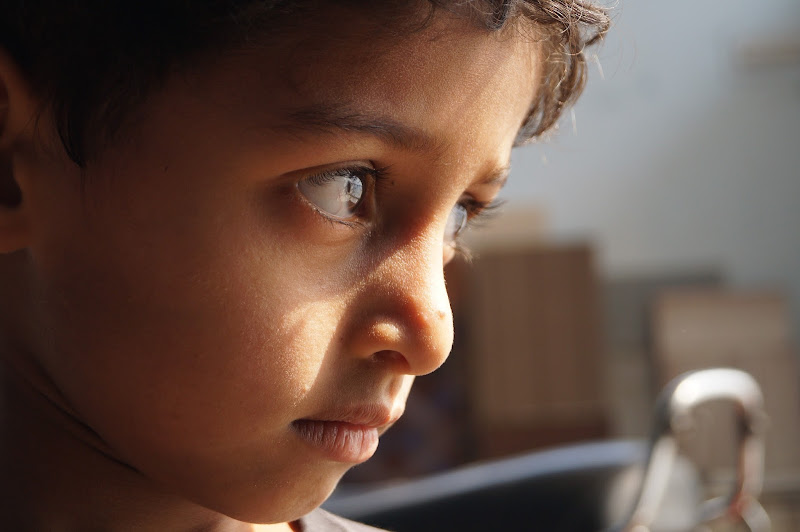
Our work is not to teach, but to help the absorbent mind in its work of development. How marvelous it would be if by our help, if by an intelligent treatment of the child, if by understanding the needs of his physical life and by feeding his intellect, we could prolong the period of functioning of the absorbent mind!
—Maria Montessori
The Absorbent Mind, p. 38.
The Absorbent Mind, p. 38.
The recognition of Sensory Processing Disorder (SPD) has come a long way in being recognized by the medical profession. In the 1960s, Dr. Jean Ayres introduced the term Sensory Integration Dysfunction to describe “atypical social, emotional, motor, and functional patterns of behavior that were related to poor processing of sensory stimuli.” (Miller, Cermak, Lane, Anzalone, & Koomar) Yet, even in the late 90s and early 2000s, when I mentioned that my son had been diagnosed with SPD to his doctors, I was met with shrugged shoulders. Even more frustrating was the fact that the majority of his teachers had never heard of SPD.
The Montessori Environment is Well Suited to Supporting Students with Sensory Issues
Our daily life is a multi-sensory experience. Our brain takes in sensory information, which in turn tells our body how to react. We avoid things that cause us pain or discomfort and respond positively to things that are pleasurable. When a person is unable to respond effectively to stimuli due to a neurological malfunction of sensory processing information or integration, his daily life is severely affected. (Isbell)

We are familiar with the senses of sight, sound, touch, taste, and smell. Just as important, but often discounted, are the vestibular sense (movement and balance related to the inner ear and head positioning) and proprioceptive sense (body position and awareness). Vestibular and proprioceptive processing issues can greatly affect learning. If a child has no awareness of his body in the space around him, how can he be expected to learn how to write, use scissors, type, or play an instrument? Or what about the child who has a vestibular issue that causes him to feel like he is moving and floating when his feet are firmly planted on the ground? How will he negotiate stairs, ride a bicycle, or learn to balance?
Children with SPD are not being difficult, stubborn, argumentative, or inattentive. They are responding to stimulus according to the messages they are receiving from their brains. Neurological scans indicate that the areas of the brain that interpret specific sensory input display similar levels of pain to those associated with sticking needles in the inner ear or having a tooth drilled without the use of pain medication. (Isbell)
Preparing the environment for children with SPD
As a parent, I had to make a conscious effort to change our home environment to help my son. One of the challenges my son faced was related to food; he experiencied aversion, fear, and disgust. We understood that these challenges could turn into a serious emotional issue that could lead to an eating disorder. Rather than trying to change our son, we changed the environment. It meant that I cooked two separate meals for the better part of 16 years, but it was a small adaptation that kept everyone happy and healthy.Similarly, Montessori teachers can help children in their classroom with SPD by being aware of their needs and making adjustments to the environment.

Some children with SPD are “seekers,” constantly looking for more sensory input. For these children, consider ways that you can provide highly sensorial experiences throughout the day, such as incorporating large motor activities both inside and outside the classroom for vestibular seekers. Fortunately, the Montessori environment is well suited for seekers because it affords children constant movement and multi-sensorial experiences, even during work time.
The Montessori environment is also fitting for children who seek to avoid certain experiences. Soft lighting, muted natural colors, and soft voices make the Montessori environment ideal for auditory and visual avoiders. They can also use the peace corner as a quiet place when they need to take time away from sensory input.
As with anything that interferes with learning, early diagnosis and intervention is important for children with SPD.
Share your observations with parents and seek an evaluation by professionals trained to identify SPD, such as a pediatric occupational therapist, a developmental pediatrician, or a child clinical psychologist. And consider a second opinion if the professional discounts SPD as a developmental disorder.It is important that we act as advocates for children when they are subjected to such painful experiences on a regular basis. It is our responsibility to validate what they are experiencing and find them a solution.
Works Cited
Isbell, Christy. “Sensory integration: Recognizing and responding to young children with sensory issues.” December 11, 2015.
http://christyisbell.com/sensory-integration-webinar-recognizing-and-responding-to-young-children-with-sensory-issues/
http://christyisbell.com/sensory-integration-webinar-recognizing-and-responding-to-young-children-with-sensory-issues/
Miller, Lucy Jane, Sharon Cermak, Shelly Lane, Marie Anzalone, and Jane Koomar. About SPD. “Subtypes of SPD.” Sensory Processing Disorder Foundation. (n.d.)
http://www.spdfoundation.net/about-sensory-processing-disorder/subtypes/
http://www.spdfoundation.net/about-sensory-processing-disorder/subtypes/
Montessori, Maria. The Absorbent Mind. Wheaton, IL: Theosophical Press, 1964.
As much as possible, NAMC’s web blog reflects the Montessori curriculum as provided in its teacher training programs. We realize and respect that Montessori schools are unique and may vary their schedules and offerings in accordance with the needs of their individual communities. We hope that our readers will find our articles useful and inspiring as a contribution to the global Montessori community.
© North American Montessori Center - originally posted in its entirety at Montessori Teacher Training on Friday, January 15, 2016.
© North American Montessori Center - originally posted in its entirety at Montessori Teacher Training on Friday, January 15, 2016.

0 comments:
Post a Comment
Have questions or comments? Let us know what you thought about this article!
We appreciate feedback and love to discuss with our readers further.